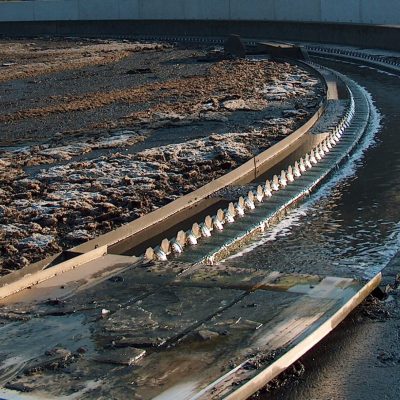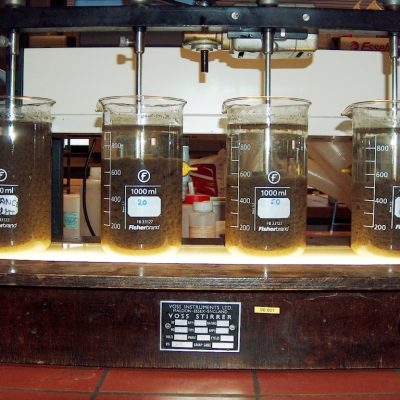Wastewater
Ecological water treatment solutions since 1976

Treatment Wastewater
Treating wastewater is a complex process. One of the steps in the treatment is coagulation and flocculation (forming of flocs). The formation of these macroscopic flocs promotes sedimentation.
The choice of the right flocculant is extremely important for ideal flocculation and is highly dependent on the type of wastewater.
The nature of the contamination determines which type of charge (anionic or cationic) must be used, as well as which combination of charge density and molecular weight of the polymer gives the best result. Because of these different properties, there are thousands of different polymers. An extensive flake test is therefore recommended. With this test, the type of flocculant and the ideal dosage are determined on site or in the lab.
Problems
Certain bacteria, such as Microthrix and Nocardia, can stabilize the water/air interface due to their hydrophobic cell surface. These stabilized gas bubbles, surrounded by a layer of thread formers and silt, rise to the surface and form a floating layer. The number of thread-forming micro-organisms is therefore often much greater in the floating layer than in the suspended sludge. This is the main mechanism of floating layer formation in municipal (WWTPs) and industrial water treatment plants. Floating layer formation can give rise to various problems in the aeration and secondary settling tank. Some factors appear to be conducive to the development of thread-forming bacteria, in particular low to very low load systems, variations in the composition of the wastewater and the presence of oils and fats.

Solution
One of the most common thread-forming bacteria is Microthrix parvicella, which is particularly difficult to control adequately. With AQUATREAT 912, very good results are obtained with floating sludge formation in sewage treatment plants, due to thread-forming bacteria (Microthrix, Nostocoida, Nocardia and other Actinomycetes ...).
The high charge density creates intensive flocculation of the activated sludge. In this way, the small flocs are transformed into larger and heavier flocs, which are much less likely to float on the water surface. In addition, the use of AQUATREAT 912 results in many cases in a reduction of the sludge volume index (SVI).
Depending on the application or the problem, the dosage of AQUATREAT 912 can be dosed as a pure product on the one hand or sprayed on the floating layer as a diluted product on the other. AQUATREAT 912 is a non-hazardous product, contains no metals, is not harmful to the environment and works quickly and efficiently without pH correction, in contrast to classic alternatives such as PAX, polyaluminium sulfates or ferric chloride-aluminium sulfate.

Get advice from our experts
Contact us to receive more information, so that together we can look for a solution for your water treatments.
Our products for Wastewater
